Shenzhen, a city of at least ten million in China’s Guangdong province, is a bit of an overlooked tourist destination among non-Chinese travelers. Among Hong Kongers, however, it is known for being a mecca for cheaper (often in both price and quality) goods and eateries, and at night, as one giant massage parlor. Mainland visitors on package tours are usually shepherded through one of the city’s kitschy theme parks– Splendid China Folk Village, hosting small-scale versions of storied Chinese attractions, or Windows of the World, with its miniature versions of the Pyramids of Giza, the Eiffel Tower, and an out-of-date Manhattan skyline.
Shenzhen is an easy to reach destination, offering multiple road (including a 24-hour one at Huanggang), rail and ferry crossings to Hong Kong and an international airport. Excluding citizens of the USA and France, many nationalities can get a five-day VOA, or visa-on-arrival, at select Shenzhen entry points. If you happen to be in Hong Kong during a trade show or major convention and are finding that even the seamy hostels are charging extraordinary rates, you would be wise to check out its mainland neighbor for a wide range of prices and thinly-insulated rooms.
If cost and having a place to drop your luggage are more of a concern than consecutive hours of sleep, the word 宾馆 (bīnguǎn), or guesthouse/motel, might be very helpful, not just during your time in Shenzhen, but all throughout China. Some may even come equipped with desktop computers 电脑 (diànnǎo) and water coolers, which are excellent additions to any room, particularly in the mainland. Internet cafes in China are smoke-filled dungeons, moreover, they don’t all accept foreigners- those that do require your passport details, so have fun translating the data page for them. Also, since drinking from the tap isn’t recommended, and many times water bottles have been reused in kiosks and convenience stores, that water cooler is your trump card.
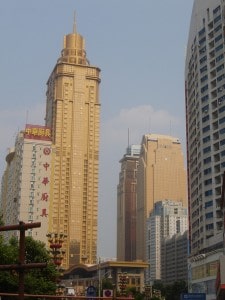
I lived in Shenzhen on two different occasions. From 2006-2007, I was a middle school English teacher in the Luo Hu district, the old downtown, and host to the busiest Hong Kong border crossing, low-cost (read: bargain hard) shopping, spas, and a plethora of regional Chinese and international (ie, Japanese, Indian, Korean, and Turkish) restaurants.
During my second stint, from 2010-2011, I was based in the Nanshan district, home to Splendid China Folk Village, Windows of the World, and a long-time expat enclave called Shekou. Although locating international foodstuffs in Luo Hu, Nanshan, and Futian (home of the new central business district), the three districts most likely lived in or visited by foreigners, gets simpler every time I return, Shekou was the original placebo for homesickness.
When you’re not busy craving gherkins, gravlax, or grape juice without added sugar, I have found that the real beauty of Shenzhen lies in its unsung dining scene.
Due to the city being declared China’s first special economic zone (SEZ) in the early 1980s, Chinese laborers from all over the country flooded the region looking to take advantage of this landmark decision. Along with this massive domestic migration of people came their nostalgia for home cooking. Shenzhen’s relative proximity to Hunan and Fujian provinces means economical meals called 木桶饭 (mùtǒngfàn), or meals on top of rice served in wooden casks, and steamed dumplings with peanut sauce, respectively. If you prefer to take your starch in the form of noodles instead of southern Chinese rice, try an inexpensive 拉面 (lāmiàn), ramen soup hailing from Lanzhou.
Hoping to delve deeper into the lesser known regional Chinese cuisines? Try negotiating for a “slice” of Xinjiang nut cake, called qiegao. This is onerously sold by the Uyghurs, a Muslim minority of Turkic descent; they aren’t always around, but if they aren’t, it’s because these biking vendors are being chased away by local law enforcement trucks. If you’re having trouble locating them, check out the area by the intersection of 文锦南路 (wénjǐnnánlù) and 春风路(chūnfēnglù) in Luo Hu for your best chance at snagging a piece. That part of town is the de facto Muslim neighborhood.
Shenzhen may not have the (actual) Great Wall, Potala Palace, or the famous skyline of Shanghai’s Pudong, but if subtropical weather, numerous parks, extensive public transit options, a plethora of Chinese eating options, excellent connections to the rest of the country, modern architecture, and insight into one of the nerve centers of the Chinese economy tantalize you, then you might be pleasantly surprised.
[box_light] Jonathan DeLise is originally from the New York City area, but due to having lived in East Asia for more than three of the past seven years, feels more confident in sharing insight about Jakarta nightlife and Tokyo convenience stores than wondering how much each additional adjective is going to cost you at a brasserie in Tribeca.
Jonathan DeLise is originally from the New York City area, but due to having lived in East Asia for more than three of the past seven years, feels more confident in sharing insight about Jakarta nightlife and Tokyo convenience stores than wondering how much each additional adjective is going to cost you at a brasserie in Tribeca.
His blogs Building My Bento and Collateral Lettuce emphasize his interest in languages, food, architecture, and transportation, though he is most enthused about pursuing a career involving eating, traveling and writing. If any restaurant offers as much of a variety of fauna as Noah’s Ark might have, please send him a fork, a moist towelette, and directions.[/box_light]

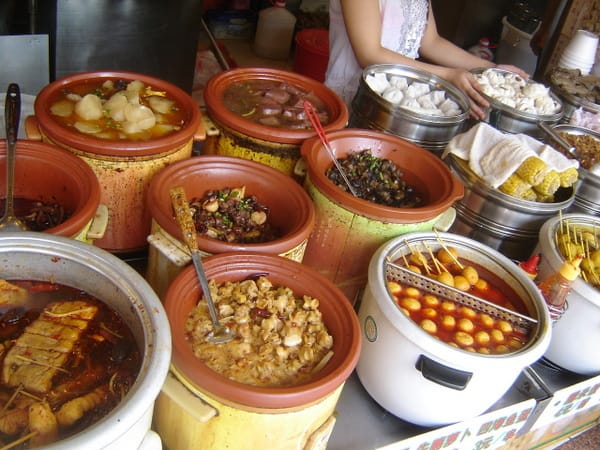

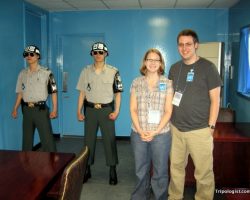
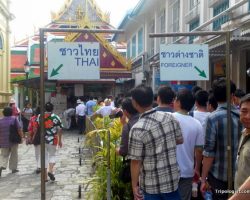
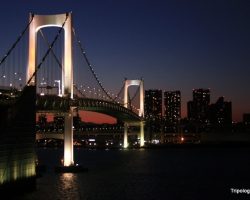
I want credit for at least one of those photos. Duh. And what is Commentluv? My box is checked and this is ridiculous. So much emotion for one evening.
Indeed you took the bio photo, so to you (and that) I say i-ni-che/bah-si-tay and 感谢.
Commentluv adds your most recent blog post below your comment, depending on which website you filled in.
Sounds like there’s a lot of good food there. I know some guys that live in Guangzhou and they seem to enjoy the variety. How did you like teaching English in China?
Hi Tim.
There’s definitely a wide array of regional Chinese food in Shenzhen, thanks to domestic migration starting with part of the city being declared the first SEZ (Special Economic Zone) in the country. Of course there’s plenty of food from around Guangdong province (Cantonese and Chaozhou cuisines, for example), but if eating is a priority in one’s travels, Shenzhen serves as a good barometer for the rest of the country. Are you interested in visiting Shenzhen/Guangzhou?
I taught English to have a good reason to live in China; there was an ad in my school’s paper which I took advantage of, with a bonus being receiving TEFL training in Beijing at the start. I had about 55-60 students per class, and although I got along with most of them, the level of spoken English throughout the school was decidedly very low.
Anyway, I did learn that I like visiting China much more than living there, though I laud the “extended” hours of everything, from post offices to furniture shops. You never know when you’ll need a used ottoman at midnight… is teaching something you’d like to pursue?
Lovely post! I really enjoyed reading it. I have been to China on more then 30 occasions but never to Shenzhen. The only reason behind is, as you mentioned “overlooked by non-Chinese travelers” Next time….
Thanks for your kind words, Tara! Where in China have you visited most often?
I was in Shenzhen as recently as July this year, and I can still recommend it as a destination for sampling regional Chinese cooking. Other than that…